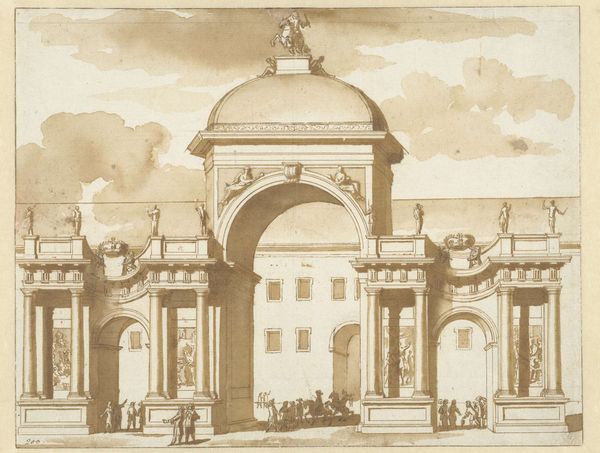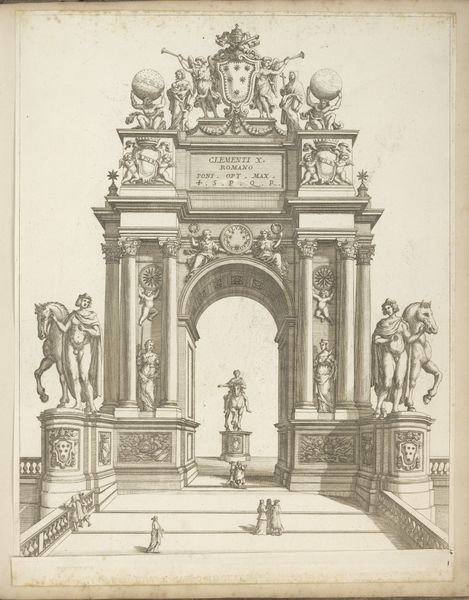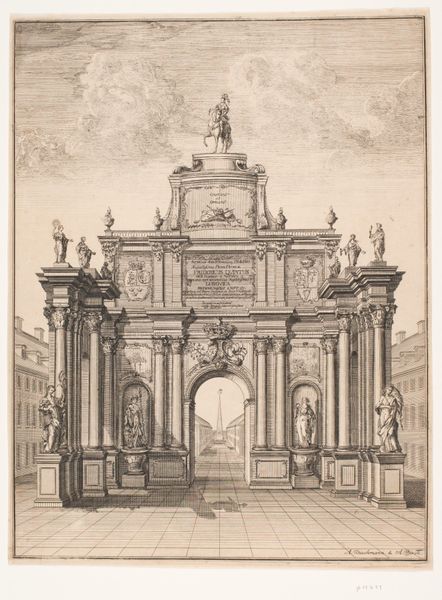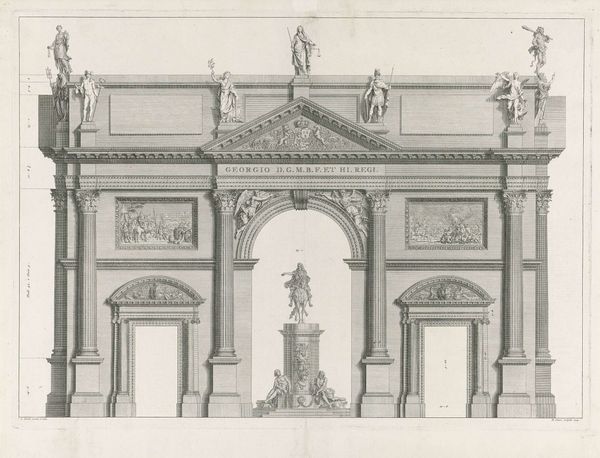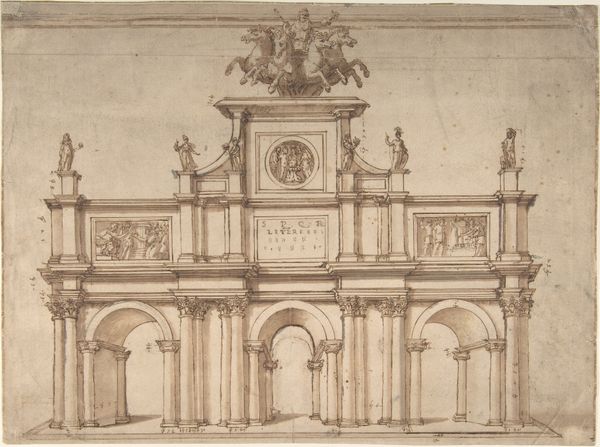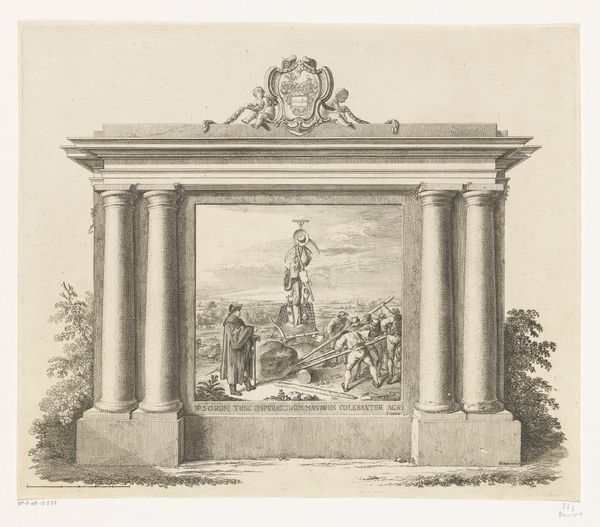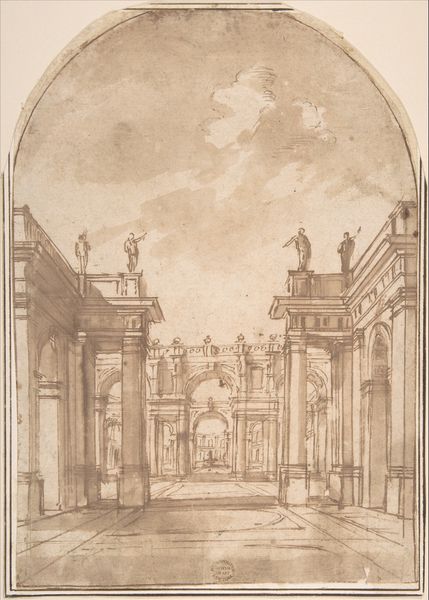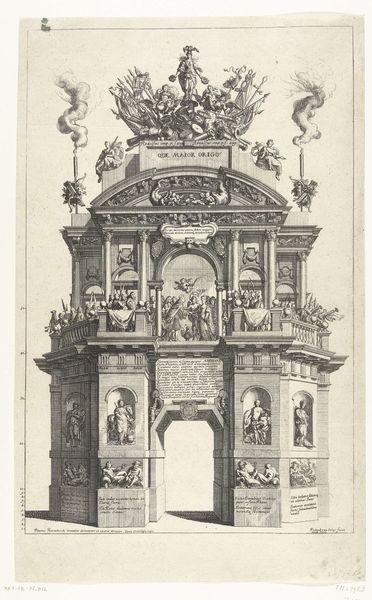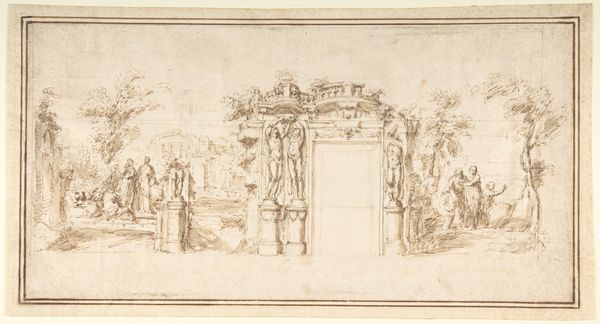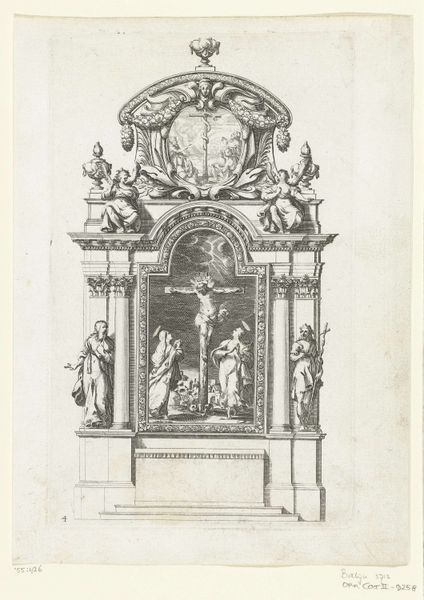
drawing, paper, ink, architecture
#
portrait
#
drawing
#
aged paper
#
toned paper
#
quirky sketch
#
baroque
#
mechanical pen drawing
#
sketch book
#
paper
#
personal sketchbook
#
ink
#
sketchbook drawing
#
cityscape
#
watercolour illustration
#
history-painting
#
storyboard and sketchbook work
#
sketchbook art
#
architecture
Dimensions: height 207 mm, width 275 mm
Copyright: Rijks Museum: Open Domain
Jacob van der Ulft created this sepia drawing of a temporary triumphal arch in The Hague, likely around 1691. It would have been built from wood and plaster, and painted to resemble stone. Although ephemeral, these arches were carefully considered propaganda tools. Van der Ulft has captured the labor-intensive nature of such a construction. We see this in the detailed rendering of its classical architectural elements, like the columns and sculptural reliefs. In this context, drawing itself becomes a crucial part of the process. The artist's hand meticulously simulates the arch's imposing presence. It’s a reminder that even seemingly spontaneous celebrations are carefully constructed. These involved the skilled labor of artisans and laborers, who transformed raw materials into symbols of power and prestige. By emphasizing these material and social aspects, we appreciate the arch not just as a symbol of authority, but also as a testament to the complex interplay of art, labor, and politics in 17th-century Dutch society.
Comments
No comments
Be the first to comment and join the conversation on the ultimate creative platform.
